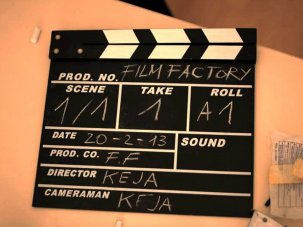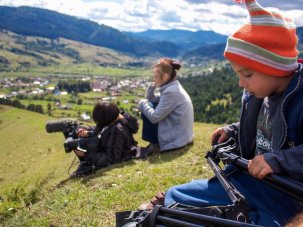Lecture | Web exclusive
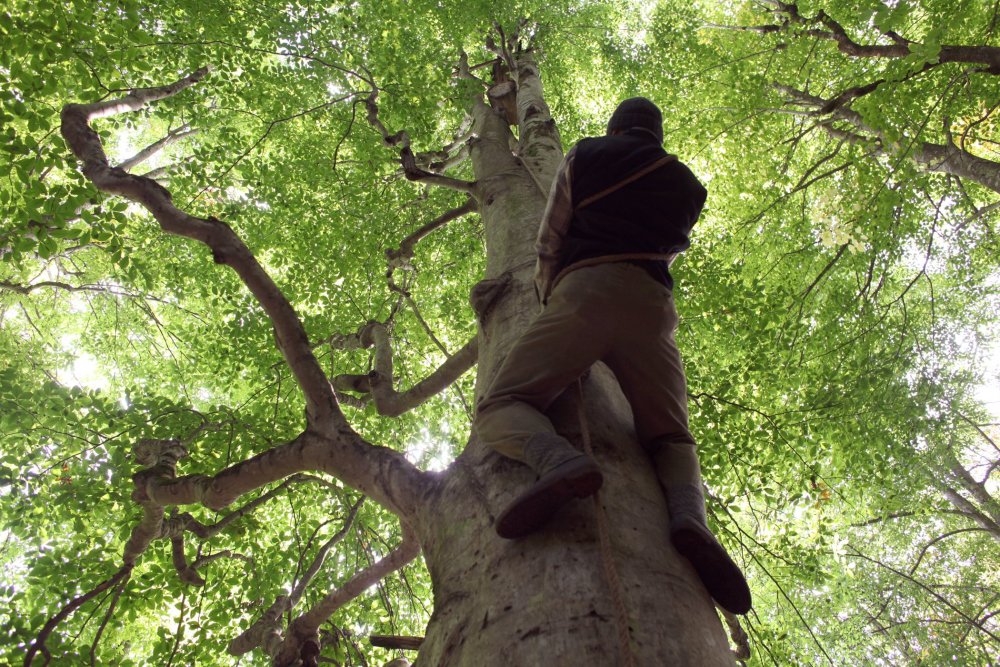
Honey (Bal)
Editor’s note: This text by Semih Kaplanoglu was commissioned by the Netherlands Film Festival and delivered as the annual Cinema Militans lecture in Utrecht on 29 September 2012. The Cinema Militans lecture is named after an essay published in 1929 by Dutch critic Menno ter Braak in which he argues for the need for an aesthetic and critical language which is unique to the new medium of film, not borrowed from other, older art forms.
The fit between ter Braak’s polemic and Kaplanoglu’s view of filmmaking turned out to be surprisingly good, despite their very different cultural backgrounds. Paying homage to Tarkovsky, Kaplanoglu argues for a language of film which is image rather than story or character-based, in which the prevailing logic and linking elements are visual rather than narrative or psychological. But, in the lecture’s most interesting section, he goes further, linking his own filmmaking practice to his country’s Ottoman culture and history, and particularly to Sufism, or ‘mystic Islam’, whose notion of the continuous present has strong links with the intrinsic nature of film.
Born in Izmir in 1963, Kaplanoglu won the Golden Bear in Berlin in 2010 for Honey (Bal), the final part of his Yusuf trilogy (to which this speech makes frequent reference). The other two parts of the trilogy are Egg (Yumurta, 2007), which won a total of 10 prizes at the Antalya and Istanbul Film Festivals in 2008, and Milk (Süt, 2008), which won the FIPRESCI prize in Istanbul the following year.
This text comes from an interview with Kaplanoglu conducted in English by Nick Roddick on 22 August 2012 in Istanbul, with Cem Ülgen acting as interpreter, with additional material from the interview book Yusuf’s Dream by Uygar Sirin. The final text was amended by Kaplanoglu, with translations by Zeyneb Büyükcoskun. It was delivered in Turkish, with English surtitles.
1
I knew nothing about Menno ter Braak but, when I came to read his text, I found that there were certain points that overlap with some of the principles I believe in when it comes to cinema, particularly the idea that image is the main component, the backbone of any film. There was also a second point that I found very interesting, and that was the idea of unity, which I would call harmony.
By that, I mean that all the elements that make up a film – image, lighting, acting, editing, setting and so on – must all work together, with no one element taking the foreground. And finally, I was very excited by Mr ter Braak’s idea of pure cinema, since pure cinema is a primary motive and concern for me while shooting a scene. Those are the three fundamental elements I should like to concentrate upon today.
We live in a shallow era where truth is buried and everyone seems to be trying to make it even shallower. 13- and 14-year-old teenagers are constantly killing one another in their computer games, so it becomes quite ordinary to kill someone or kill something – not just living creatures but also ignoring the ‘other’ by dismissing thoughts, beliefs and the rights of others. Do I support the use of cinema in further desensitising an already unsafe and dreadful world, or do I bring the beauty which lies in the souls of human beings into the foreground?
2
Before I started making films I wrote poetry, which was a very different kind of activity, a different direction. In 1986, when I had already graduated from university, I was living in Istanbul. I have an old friend, Selim Cebeci, who is an artist. One of his friends who lives in England had recorded Tarkovsky’s Mirror onto a Betamax cassette when it was shown on television there. It had English subtitles and was full of commercials, but it made a huge impact on me. All the seeds of my ideas and of what I do in cinema today were planted when I watched Mirror.
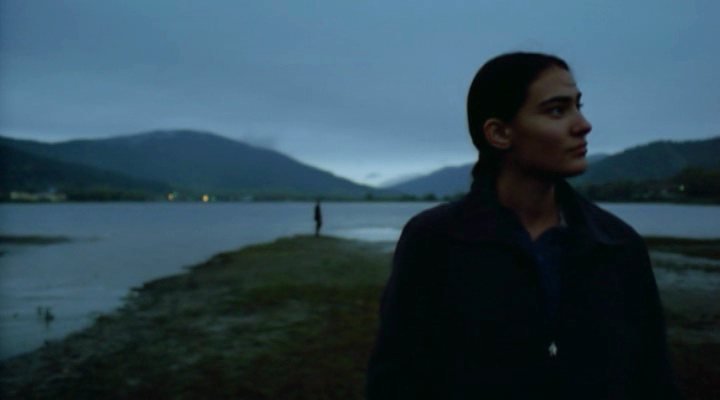
Egg (Yumurta)
A little later, when I started to make short films, I discovered that I was less interested in narrative than in the emotion provided by the bringing together of image and sound. I also noticed that, when cinema feeds off literature, this can have a very limiting effect. Of course, literature can be of service to mainstream cinema. In fact, mainstream cinema probably requires that sort of limitation – just like it requires a story – to achieve its objective.
It has to do with time. In mainstream cinema, the feeling of time is achieved through fast forward cuts. This can generate a kind of numbness, an insensitivity and remoteness, both in the filmmaker and in the audience. An audience which says “I watched a film and didn’t realise how the time passed” has had fun. An audience which says “I watched a film and the time just never seemed like passing” has been exposed to time. Time is not something to be avoided, but something to come to terms with.
Yes, in the end there is death. Now, what reminds us of death and what we call time is the main material of cinema, and the way we use it is an issue of moral concern. In my view, cinema should be like a prayer, a meditation. It should be slow enough to allow the audience to feel the inner aspect of life and to see beyond outer appearances. The use of time is crucial to the discovery and exposure of truth. I try to create a parallel between time in the film and time in our lives. This is why I avoid fast-forward cuts in my films. Also, as Ibn Arabi said, it must always be remembered that we live in an infinite present, which started at the moment of Creation.
3
Cinema is absolutely related to emotions and to the associations they have. People everywhere have shared memories and shared life experiences, and it is these which activate our memories. Sometimes a smell can remind us of childhood; well, cinema can also have that effect on us: it makes us retrace our memories and experiences. So, when I start a film, I don’t begin by writing a narrative. I try first to locate a certain basic emotion, then try to make that emotion more tangible, more concrete. I don’t begin by writing a script. First of all, I try to organise the setting, the lighting, the colours that will surround this emotion. And the narrative eventually comes out of this discovery process.
For instance, I like the way Alfred Hitchcock uses objects in his films. If you don’t think about the objects when you make your film, you can’t support your story with them. Every element of a film has to be in harmony with all the other elements. Neither the acting, nor the music nor the script can be made more important than the others. All the elements have to be organised and used to their fullest extent.
For me, a leaf is as important as an actor. This may be an object. It may be a tree. It may be the colour of the bark of a tree, or the face of an actor who is not necessarily ‘acting’. Everything is done to find this emotion. And everything exists to serve the emotion. From the very beginning, this emotion emerges from the naturalness of time, space and objects.
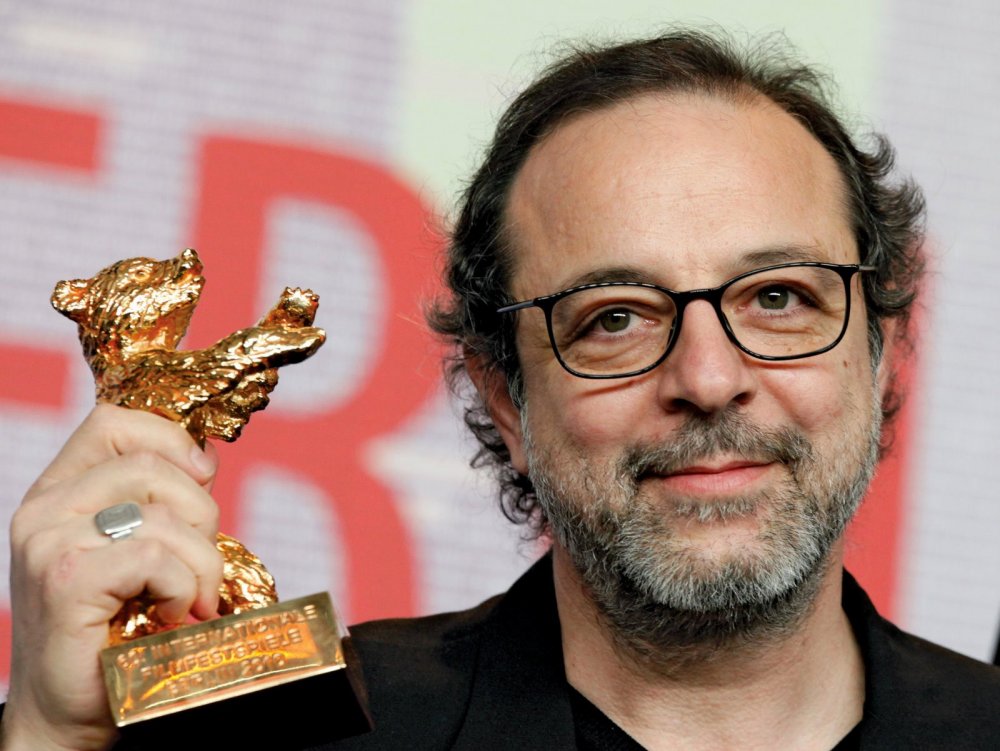
Semih Kaplanoglu with his Berlinale Golden Bear for Honey
I use no artificial lighting because, if I decide to use a space, I want to reflect the current situation of the space, the current atmosphere, that is: the light, seen unaided by the eye to serve the emotion. For this reason, I avoid artificial lighting which destroys atmosphere. And that is also the reason why I use natural lighting. If the interior setting has a fluorescent bulb in it, I use that. If the exterior setting has a street lamp, I might boost up its voltage just a little but that’s about it: I will still be using original sources of light.
I still use 35mm, although I am not sure if I will be able to continue to do so. I wish I could, because shooting digitally requires a totally different mental process. In fact, it seems to me that, when you use digital, everything undergoes a radical change. The idea of looking for an area in which pure cinema can manifest itself, as it did with 35mm over the past century, has not yet surfaced in the era of digital film. Film made with digital technology will eventually evolve into something else. I don’t know what that will be. I don’t know whether it will be called film any more, but it will definitely evolve into something else. But we haven’t got to that point yet.
4
The locations are very important in my films. The first two parts of the Yusuf Trilogy were shot in the Izmir region, specifically a town in Izmir, and the third one was shot in a small village in the middle of nature, in the north-eastern part of Turkey. The trilogy narrates the life of a poet who was born in a place that can barely be called a village, grew up in a town and now lives in a city.
During the modernisation process of the last two centuries, the transition from village to city has been very important to Turkey, as has the concern with being in a transitional point between East and West, between the local and the universal. There has been a tension between East and West, between local and universal and between village and city in the history of modernising Turkey. Particularly over the past 50 years, people in Turkey have immigrated from rural to urban areas, and this has led to a clash between new and old, to a conflict between the values people have in their lives – hence the dilemma that feeds all forms of art.
As a result of the dichotomy between centre and periphery – between modern Turkish, with its Latin alphabet, and Ottoman Turkish, with its Arabic alphabet – the individual brought face to face with many such conflicts experiences the dilemma of “Who am I, in fact? Am I a villager or a city dweller? Am I religious or secular?” Actually he or she cannot come up with a plausible answer to these questions. Contemporary Turkish literature portrays the individual who is stuck between those dilemmas. This is especially true of the novels of Orhan Pamuk and his predecessors Ahmet Hamdi Tanpınar and Oguz Atay…
For my part I think that, for the moviemakers of those countries which are experiencing a dichotomy similar to ours, the way to get out of this lies in building a deep relationship with the spiritual tradition they belong to. In my case this was with Islam and Sufi thought. Here, I would like to mention my contemporary Apichatpong Weerasethakul. I love his films which show an uninterrupted continuity between the tradition he was born into and today, the present. Just like he does, we can put back into use again the souls, the spirits and legacy of the previous generations in today’s world, because those experiences of humanity were more in tune with the nature, spirituality, soul and creation of human beings.
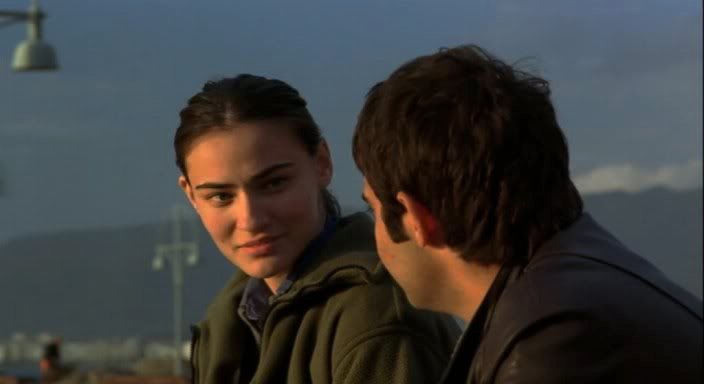
Milk (Süt)
In this way, my art draws on the tradition of the above-mentioned legacy of previous generations who prospered in Anatolia and who can be traced back more than a thousand years. In Sufism, there is the idea of haal, which is a state of consciousness. Just as in Sufi music, which is very local and very authentic but nonetheless has something universal about it, I’m trying to locate in cinema some kind of local or authentic dimension, a state of emotion and haal that could also be applicable to universal human nature. No matter which art form we are talking about, you are somehow able to push the boundaries of the form itself by using the local and the authentic.
5
For about a decade now, I have been intensely interested in the cinematic form of haal, more specifically in how Sufism resonates in art and in our particular culture. I see that we in Turkey have this very rich tradition, which is not adequately reflected in the art. I see a great vacuum in the employment of these traditions. And I believe that, if we are to produce something that is genuinely indigenous, genuinely unique to our particular way of life, this is a vein that has to be tapped into. That is what has led me towards the idea of pure cinema.
Pure cinema is a type of cinema whose existence depends on the utilisation of what is unique to cinema and the least possible utilisation of other sources of art, such as literature. Avoiding literary forms is a way of getting closer to pure cinema. In one-and-a-half hours of a mainstream film, we usually watch a story but the emotion in it is buried. But pure cinema, by employing its own material/aesthetic means, tries to make the audience feel that emotion which serves as the basis of the film, and to unite that emotion emanating from the film with the one with which the audience is familiar; and it does so by removing the narrative in between.
When we look at the traditional architectural works of the Seljuk era or the Ottoman classical era, for example, we see that stone is the only and main material and that stonework is employed with a minimalist mentality. It can inspire us to reflect on the opportunities that pure cinema can offer.
The Suleymaniye Mosque in Istanbul is entirely built of one material, and that is stone. This magnum opus of Sinan, the architect, is my biggest inspiration. In the same way, I believe that filmmakers have a lot to learn from this minimalist/pure tradition that is so deeply ingrained in our culture. I realised that tradition has a different way of giving answers, a different method of approach in respect to the structure and how it should appear.
I have to admit that I am quite a late learner in this inspiring ancient tradition. It is not just about reading and trying to find its counterpart in cinema, it is also a kind of self-education ‘to know oneself’. This discovery process is reflected in my films and I am really curious to know what further cinematographic enhancements this ongoing process will create in my cinema.
6
When I start working on a film, I go to the location I have chosen many times. I spend a lot of time there. I pick out all the sounds and make a lot of separate sound recordings prior to writing the script. And when I sit down to write the script, I try to recall all those sounds and hear those sounds ingrained in the script as well. I like placing limitations at the beginning of a project, such as with the Trilogy. I decided right from the beginning that I wouldn’t use any music: I would try to use the background noise or the actual location sounds and try to manipulate them into a sound world that would act as a kind of music. When I send my sound engineer out, I give him or her a list of sounds that I particularly want and that I want them to record. Also, in the post-production stage, probably sound is the part I spend the most time on. Sometimes it takes about three months for me to have a complete sound design. It is a very important part of my work.
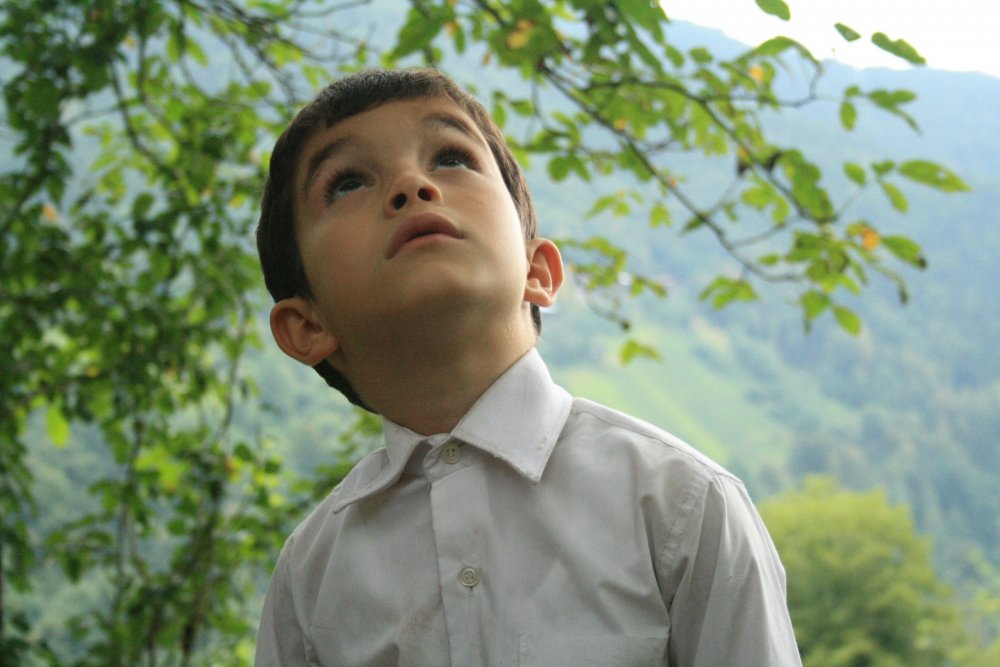
Honey (Bal)
For instance, when we were working on the sounds of a scene in Honey where the child is walking in the forest, the foley artist started to walk up and down in the laboratory for the sound recording. He was over two meters in height, and over a hundred kilos in weight. When I closed my eyes, I felt like it was a giant that was walking, not a child. There was no rhythm to his steps. And a boy doesn’t always make the same sounds when he is walking in a forest.
I said to the man “You’re going to walk on grass, dirt, sand, and then on stones.” I made him walk four times to record four different sounds, and mixed those channels to make one sound. The man said that my work would take a long time to finish. Of course it would take a long time to finish. Even if the audience isn’t aware of such details, it can certainly feel them.
Likewise, I can wait for snow to fall to shoot a certain scene, or I can sit for hours waiting for a cloudy atmosphere to form outside in order to shoot the scene the way I want it. People can say that it’s stupid because, with digital technology, you can add in anything you want afterwards. But not the emotion of the scene: that depends on its authenticity.
Since my objective is to create a meditative effect in my films, I don’t want to use anything that can spoil that effect. Even if I do use a digital camera one day, I won’t make colour adjustments that can spoil the sense of reality of the film, and I won’t add snow or rain effects. If the scene is rainy or snowy, I’ll shoot it in the rain or the snow. I like waiting for the rain. You may think this stupid, primitive – a waste of time. But for me it is the right thing to do.
The fact that I am the producer of my own films also gives me an advantage here, or let us say it provides a certain ambivalent situation in which I am at liberty not to think about the audience that I am directing the film for. But it also gives you the responsibility to think about them as well. As a filmmaker, the bigger audience I can reach, the better. But it is the films that matter.
I took all the money I got at a Turkish film festival as a prize for Egg and put it into the production of Milk. I spend the money that I earn from one film on the next. In any film budget, there is usually a director’s fee and a producer’s fee, but I have never taken them. I always use them for my next film. So, there hasn’t been any change in my standard of living. I live a humble life. Our workers and I get salaries from the company, and we pay our expenses by using the company credit card. As a result we earn enough money to survive. And we can make movies. Why would I need more than that?




